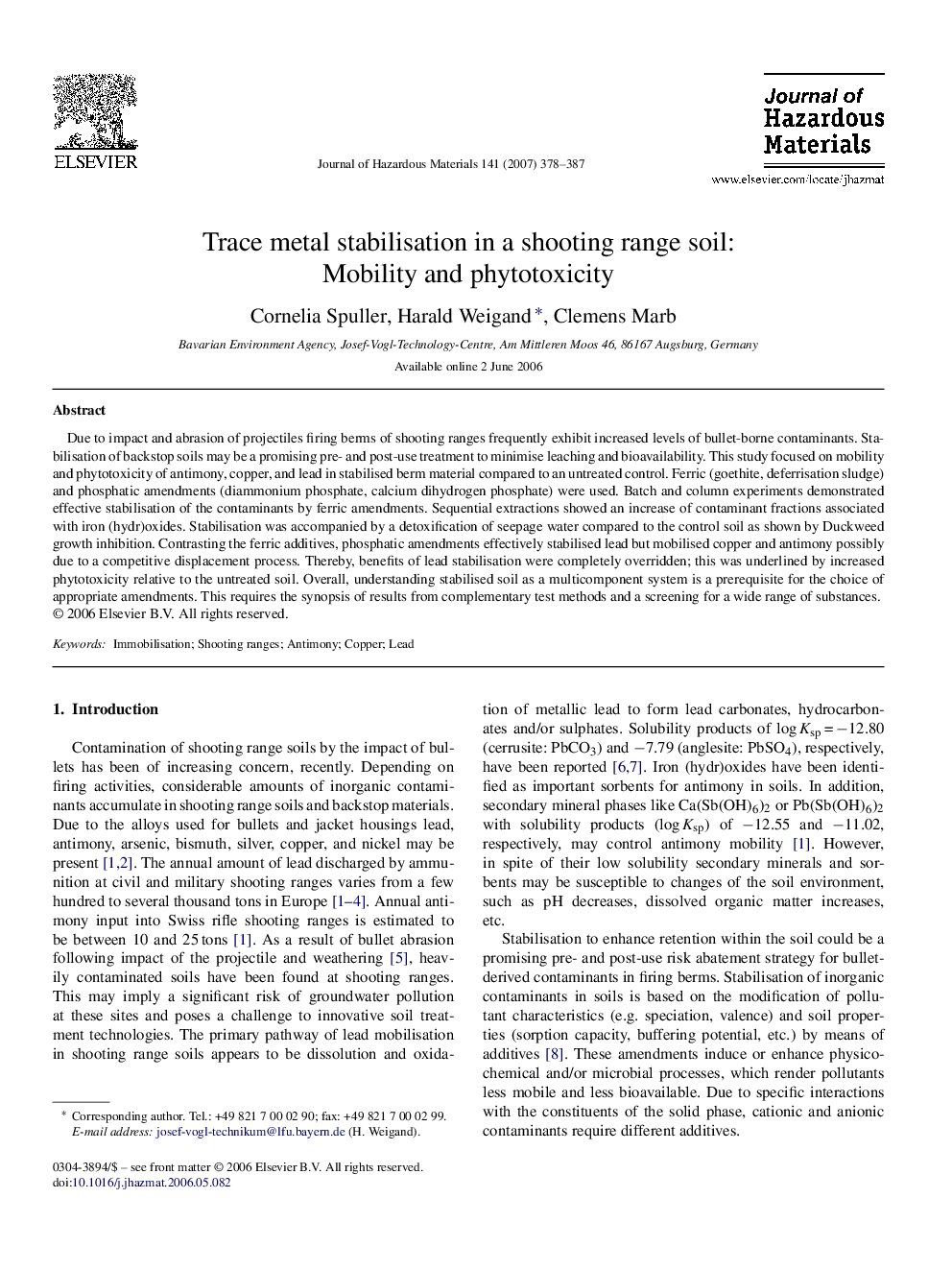| Article ID | Journal | Published Year | Pages | File Type |
|---|---|---|---|---|
| 584778 | Journal of Hazardous Materials | 2007 | 10 Pages |
Abstract
Due to impact and abrasion of projectiles firing berms of shooting ranges frequently exhibit increased levels of bullet-borne contaminants. Stabilisation of backstop soils may be a promising pre- and post-use treatment to minimise leaching and bioavailability. This study focused on mobility and phytotoxicity of antimony, copper, and lead in stabilised berm material compared to an untreated control. Ferric (goethite, deferrisation sludge) and phosphatic amendments (diammonium phosphate, calcium dihydrogen phosphate) were used. Batch and column experiments demonstrated effective stabilisation of the contaminants by ferric amendments. Sequential extractions showed an increase of contaminant fractions associated with iron (hydr)oxides. Stabilisation was accompanied by a detoxification of seepage water compared to the control soil as shown by Duckweed growth inhibition. Contrasting the ferric additives, phosphatic amendments effectively stabilised lead but mobilised copper and antimony possibly due to a competitive displacement process. Thereby, benefits of lead stabilisation were completely overridden; this was underlined by increased phytotoxicity relative to the untreated soil. Overall, understanding stabilised soil as a multicomponent system is a prerequisite for the choice of appropriate amendments. This requires the synopsis of results from complementary test methods and a screening for a wide range of substances.
Related Topics
Physical Sciences and Engineering
Chemical Engineering
Chemical Health and Safety
Authors
Cornelia Spuller, Harald Weigand, Clemens Marb,
